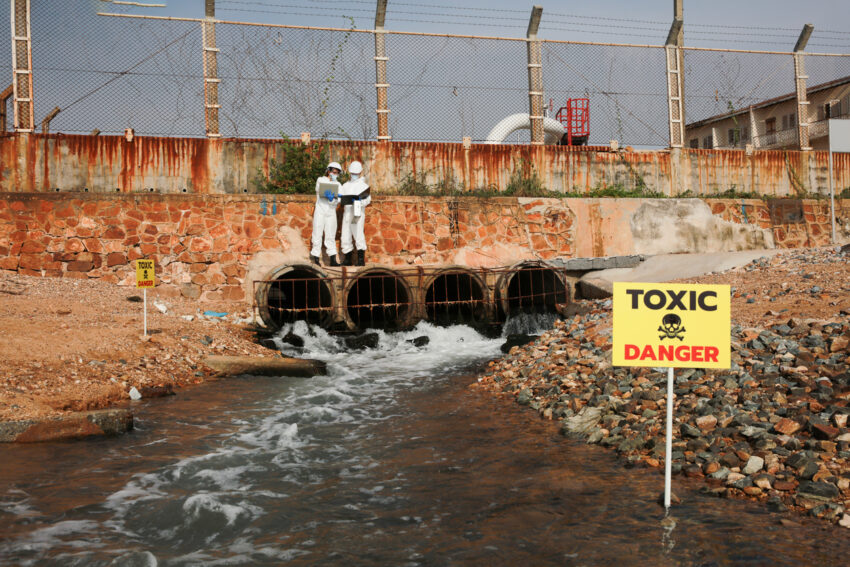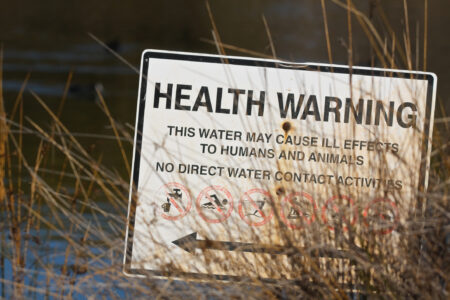
Share On Social!
From what you wear and sit on to the ingredients found in products you use to clean your home; chemicals are all around us.
For example, a range of “forever chemicals” – known as per-and polyfluoroalkyl substances (PFAS) – are found in many industrial and consumer products, such as paints, fire-fighting foam, metal plating, and cleaning agents.
PFAS have been linked to major health problems in humans and animals, according to the U.S. Environmental Protection Agency (EPA).
That’s why the EPA is proposing to add several PFAS chemicals to its hazardous waste management list under the Resource Conservation and Recovery Act regulations, in an effort to protect “communities and drinking water supplies” near hazardous waste facilities.
Before any action is taken, the EPA is giving you the chance to speak up.
Submit a model comment created by Salud America! to support EPA’s proposal to list PFAS, which can impact human health, a hazardous chemical!
Public comment opened on Feb. 7, 2024. Comments closed on April 8, 2024.
Update 4/9/24: 907 people, including 816 Salud America! members, submitted a comment to tell EPA to add PFAS to its list of hazardous materials!
Submit This Model Comment in Support of the Rule Change
Greetings,
I’m writing to support the U.S. Environmental Protection Agency’s proposed amendment to the hazardous waste management rule under the Resource Conservation and Recovery Act (RCRA).
I believe that the harmful health and environmental effects of per-and polyfluoroalkyl substances (PFAS), their salts, and their structural isomers, make these substances worthy of being designated as hazardous constituents.
Recognizing them as hazards allows governing agencies to hold facilities that use or dispose of these chemicals accountable for polluting soil, groundwater, surface water, and air.
These pollutants have been linked to reproductive and developmental challenges, increased risk for cancer, reduced immune system response, and increased cholesterol levels.
Many of these health conditions disproportionately affect the Latino population.
Cancer is the top cause of death for Latinos and cases of Latino cancer are anticipated to rise by 142% in coming years (https://bit.ly/43wO12u).
Additionally, many Latinos live in areas that have a high presence of pollution, which has been known to lead to asthma and obesity (https://bit.ly/4cCrVzI).
While I’m aware implementing this rule change could result in complications for many industries, the health and wellbeing of my myself, my family, and my community is important.
Please consider adding these (and other) PFAS chemicals to the list of hazardous constituents under the Resource Conservation and Recovery Act (RCRA).
What Are the PFAS Chemicals that May Be Deemed Hazardous?
The EPA is proposing to list as hazardous nine chemicals under the per- and polyfluoroalkyl family of compounds, salts, and structural isomers.
This is based on scientific studies that exposure to these chemicals could result in several adverse health effects, according to the EPA report.
The chemicals include:
- Perfluorooctanoic Acid – A processing aid found in cleaning agents, waxes, fire-fighting foam, and more.
Adverse health effects include high cholesterol, decreased vaccination response, thyroid disorders, pregnancy-induced hypertension and preeclampsia, testicular and kidney cancers, and low birth weights.
- Perfluorooctanesulfonic Acid – Used in fire-fighting foam, textile surface treatments for oil and water resistance, metal plating, and more.
Adverse health effects include high cholesterol, decreased vaccination response, and impacts to reproductive and developmental health such as low birth weight.
- Perfluorobutanesulfonic Acid – Can be found in paints, cleaning agents, metal plating, fire-fighting foam, and can be used to provide oil and water resistance.
Adverse health effects include cholesterol and asthma.
- Hexafluoropropylene Oxide-Dimer Acid – This chemical is used to make a key ingredient in semiconductors, automobiles and airplanes, some electronics, and communications systems, according to Chemours.
Adverse health effects include negative impacts to liver and kidney health, immune effects, such as antibody suppression, developmental impacts such as, early deliveries and bodily development delays, and liver and pancreatic tumors.
- Perfluorononanoic Acid – Used as a processing aid and found in metal plating, cleaning agents, waxes, fire-fighting foam, energetic materials, and more.
Adverse health effects include impacts to antibodies for major diseases like tetanus and diphtheria, along with pregnancy and birth effects.
- Perfluorohexanesulfonic Acid – Is used in fire-fighting foam, surface treatments to provide oil and water resistance, and metal plating.
Adverse health effects include changes to disease antibodies, decreased vaccine response in children, and increases in liver weight.
- Perfluorodecanoic Acid – Processing aid to make fluoropolymers, which can be used or found in metal plating solutions, cleaning agents, waxes, fire-fighting foam, and more.
Adverse health effects include increase cases of fetal mortality, cardiovascular disease, and effects to the immune system and development.
- Perfluorohexanoic Acid – Used or found in metal plating, cleaning agents, waxes, and fire-fighting foam.
Adverse health effects include possibility for increased risk of cardiovascular disease, increased liver weight, and decreased birth weight.
- Perfluorobutanoic Acid – Used or found in metal plating, cleaning agents, waxes, fire-fighting foam, and more.
Adverse health effects include increased risk for hypertension and increased liver weight.
What Would Happen If These PFAS Chemicals Are Deemed Hazardous?
If the proposed rule goes into effect, these nine PFAS would be added to the list of hazardous substances at over 1,700 U.S. facilities that treat, store, and dispose of hazardous wastes.

These facilities will be held responsible for investigating and cleaning up any hazardous releases of these pollutants into soil, groundwater, surface water, and air.
That would help protect communities and drinking water supplies near hazardous waste facilities across the nation, according to an EPA news release.
“Hazardous waste cleanups are a crucial part of EPA’s focus on environmental justice and help to protect public health in part by addressing disparities in access to a clean and safe environment,” according to the news release.
Today, 45% of the country’s tap water supply is estimated to have one or more of this class of contaminants, according to a 2023 U.S. Geological Survey.
Industries that could potentially be affected by the proposed rule include hospitals, textile and chemical manufacturers, transportation, and gas stations.
For a full list of impacted industries, review the details of the proposed regulation.
What Happens Next with EPA’s Proposed Rule on PFAS Chemicals?
Public input on EPA’s proposed regulation of PFAS is critical because PFAS contamination affects Latinos and all Americans.
Commenting on the proposed regulation lets federal officials know about the potential impact of their decisions. Participating in the rulemaking process also allows you or your organization to shape federal programs and rules, according to Unidos US.
EPA sought public comments through April 8, 2024.
Now that the comment period has ended, the EPA will review the comments and determine how to move forward on its proposed rule.
Also, the proposed rule addition is part of a larger initiative by President Biden to “protect public health and advance environmental justice,” according to the EPA news release.
“From day one, President Biden promised to address harmful forever chemicals and other emerging contaminants to better protect communities from exposure, and today’s actions are just the latest from EPA as we continue to deliver on the president’s commitment,” said EPA Administrator Michael S. Regan in the release. “Thanks to strong partnerships with our co-regulators in the states, we will strengthen our ability to clean up contamination from PFAS, hold polluters accountable and advance public health protections.”
Explore More:
Chemical & Toxic ExposureBy The Numbers
1
Quick Survey
Can help you find out how chemically sensitive you are



